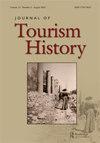‘An Entrepot for Tourism’: from developmental tourism to gateway travel in Singapore, 1937–2019
IF 0.9
Q4 HOSPITALITY, LEISURE, SPORT & TOURISM
引用次数: 0
Abstract
ABSTRACT This article narrates Singaporean tourism development vis-à-vis conventional hotel-based and expensive public relations campaign models of tourism development championed by Western multi-lateral and private institutions in the postcolonial period. Using documents from the National Archives of Singapore, this article contends that Singapore opted for an infrastructure-led, aviation-based tourism development model, which culminated in the creation of an airport – Changi – which was as much a destination as a transit point. In achieving this approach to travel as tourism, the People’s Action Party highlighted the global advantages of an attractive airport and traveller amenities that made it an ideal global transit point in Southeast Asia.“旅游转口港”:1937-2019年新加坡从发展性旅游到门户旅游
摘要本文叙述了新加坡旅游业的发展与后殖民时期西方多边和私人机构倡导的传统的以酒店为基础、昂贵的旅游业发展公关活动模式的对比。本文利用新加坡国家档案馆的文件认为,新加坡选择了以基础设施为主导、以航空为基础的旅游发展模式,最终创建了樟宜机场,这既是一个目的地,也是一个中转站。在实现这一旅游方式的过程中,人民行动党强调了具有吸引力的机场和旅客便利设施的全球优势,使其成为东南亚理想的全球中转站。
本文章由计算机程序翻译,如有差异,请以英文原文为准。
求助全文
约1分钟内获得全文
求助全文
来源期刊

Journal of Tourism History
HOSPITALITY, LEISURE, SPORT & TOURISM-
CiteScore
0.60
自引率
0.00%
发文量
16
期刊介绍:
The Journal of Tourism History is the primary venue for peer-reviewed scholarship covering all aspects of the evolution of tourism from earliest times to the postwar world. Articles address all regions of the globe and often adopt interdisciplinary approaches for exploring the past. The Journal of Tourism History is particularly (though not exclusively) interested in promoting the study of areas and subjects underrepresented in current scholarship, work for example examining the history of tourism in Asia and Africa, as well as developments that took place before the nineteenth century. In addition to peer-reviewed articles, Journal of Tourism History also features short articles about particularly useful archival collections, book reviews, review essays, and round table discussions that explore developing areas of tourism scholarship. The Editorial Board hopes that these additions will prompt further exploration of issues such as the vectors along which tourism spread, the evolution of specific types of ‘niche’ tourism, and the intersections of tourism history with the environment, medicine, politics, and more.
 求助内容:
求助内容: 应助结果提醒方式:
应助结果提醒方式:


